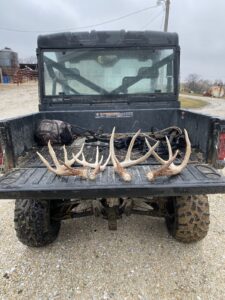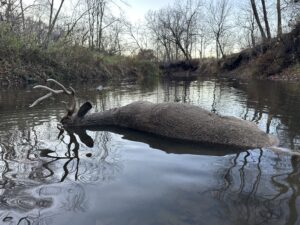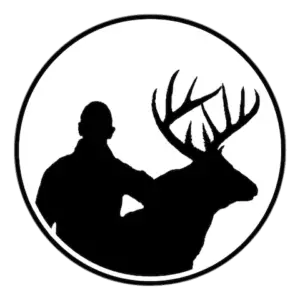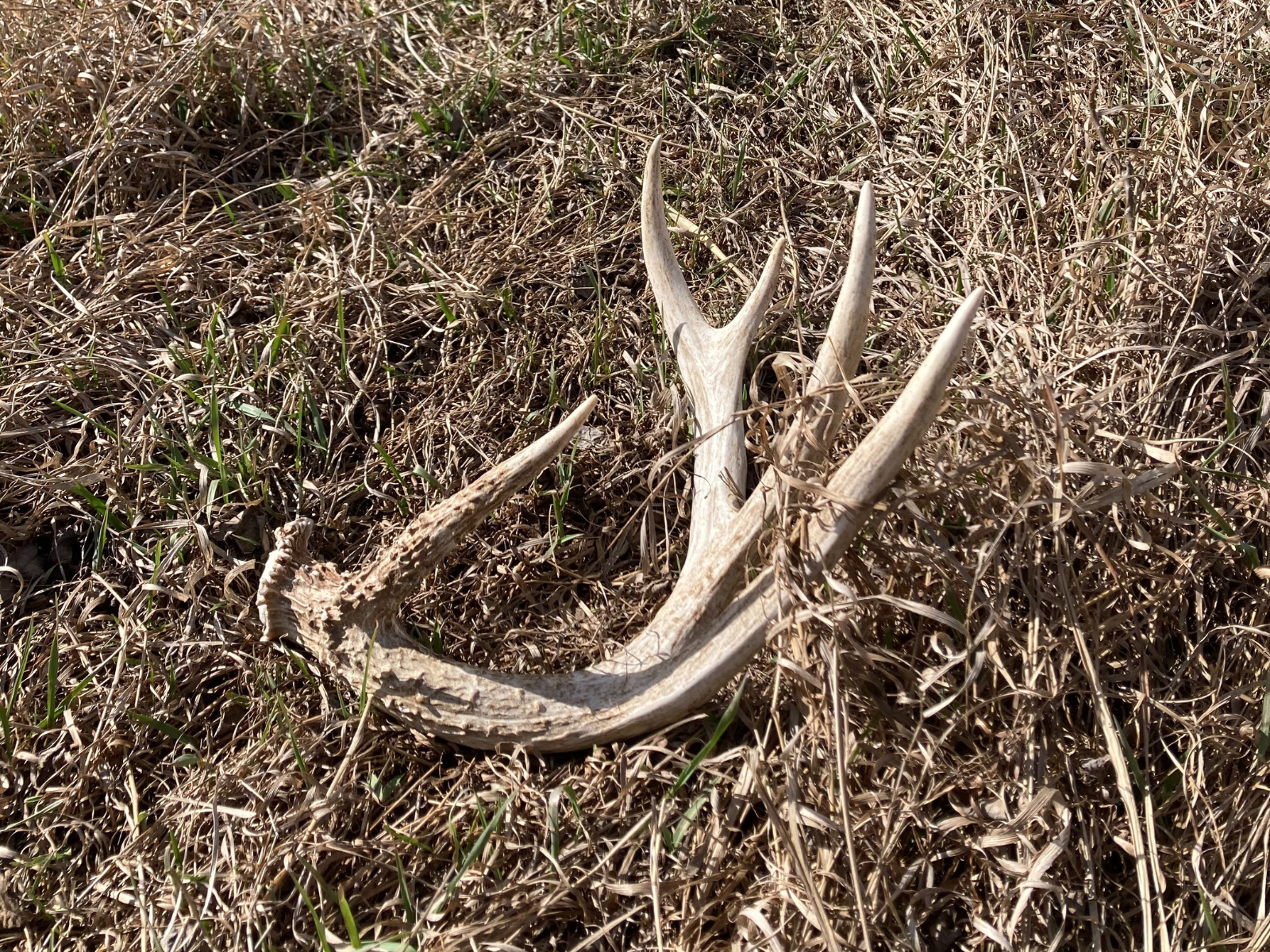Finding shed antlers isn’t an exact science. However, there’s a lot you can do to drastically increase your odds of finding them.
The secret to finding shed antlers is implementing several tips and strategies into your shed hunting routine.
If you plan on doing a little shed hunting this year, you’re guaranteed to have more success by following this list of tips and strategies below.
20 Tips for Finding Deer Shed Antlers
1. Know when to look
Deer shed their antlers between December and May. However, the majority of bucks lose their antlers in February and March. Most antlers have hit the ground by mid-April.
2. Make time to look
Schedule time to look for sheds. If you’re getting discouraged, don’t stop looking. Your odds of finding sheds will go up if you spend more time looking for them. Stay optimistic!
3. Find them early
If you’re not the only person looking for sheds in a specific area, start looking before they do. The early bird gets the worm.
4. Find them late
Don’t just look for sheds one time and never come back. Come back every few weeks to see if new sheds have dropped.

5. Cover a lot of ground
The more ground you cover the better. Use an ATV or e-bike if you can. Don’t just make one pass through an area. Zig-zag through cornfields, grassy areas, and other places where it’s difficult to spot antlers. Search these areas thoroughly.
6. Have a plan
Don’t just wander around aimlessly looking for sheds. Be strategic and efficient with your time and energy. Look at a map and plan your route before you start searching.
7. Track your route
Use a GPS or the onX Hunting App to track your steps and see where you have been. Being able to see your track will help you identify spots that were overlooked. Save these tracks for later if you plan on coming back in the near future to looks for sheds again.
8. Go slow
It can be easy to walk right by a shed without seeing it. Go slow in order to give your eyes enough time to spot and recognize a shed. Sheds are often hiding under grass with just the tips of the antlers exposed for you to see it.
9. Stop periodically to look around
Stopping for a moment to look around is good for adjusting your eyes and regaining mental focus. This is a simple thing to do and often leads to finding sheds that you wouldn’t have found otherwise.
10. Stay alert
Keep your mind in the game. When you’re not focused, your eyes can start to wander around or not pay attention. If you’re not paying attention, you could walk right past a shed without seeing it. Keep your eyes on the ground and try not to look too far up ahead (unless you’re stopping to look around).
11. Train your eyes
When you find one antler, the shape and color seems to stick in your mind, causing you to easily see more antlers. Try taking a little antler with you just to put the image in your mind.
12. Use binoculars
Use binoculars to scan open areas. You can also use them to confirm if you spotted an antler or a tree branch. Binoculars will save you time and energy by not having to walk over to something that isn’t an antler.
13. Wait for the snow to melt
Looking for antlers in the snow is difficult for many reasons. White antlers and white snow makes it difficult to easy spot sheds. Snow can also cover the antlers and hide them. Finding sheds in the snow is also difficult because you have to walk or drive around in it.
14. Wait for a cloudy day
Antlers are easier to spot on cloudy or rainy days. It’s easier to tell the difference between a stick and an antler when the sun isn’t shining bright. Rainy days are great for spotting antlers because leaves and debris will be matted down, providing a dark background to easy spot antlers.
15. Focus on food
At this time of year, deer gravitate to areas that have the best food. These feeding areas are hot spots for finding antlers. Find the food and you’ll find the deer. Find the deer and you’ll find the antlers.
16. Focus on thermal cover
During the winter months, deer spend a lot of time in spots where they can stay warm more easily. South-facing hillsides get direct sunlight throughout most of the day which makes them ideal locations for shed hunting.
Deer will also bed in tall grassy fields, cedar thickets, and similar habitat where they have protection from the wind and lay down with direct sunlight.
17. Search near water
Throughout most of the year, deer are able to get the water that they need from the foods they eat. However, their diet consists of mostly grains and woody browse during the winter months. As a result, their needs for drinking water increases. Looks for sheds in places where deer would go to drink

18. Look in the water
Deer commonly go to water sources when they are about to die. Look for sheds and deer carcass’ within the water or submerged under it.
19. Look where deer jump
Anywhere that deer have to jump is a great place to look for sheds. If a bucks antlers are about ready to fall, a jump can force them to finally drop. Fence crossings, river crossings, and ditches are great places to look for them.
20. Use a dog
A dog that is trained to find deer sheds is an amazing way to find a lot of sheds. If shed hunting is something you really enjoy and are serious about, consider training a dog to find them.

